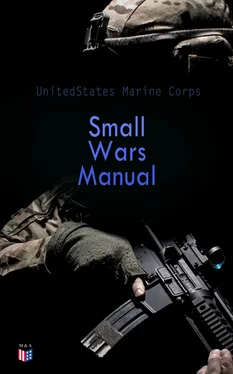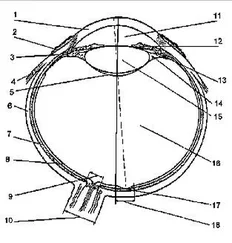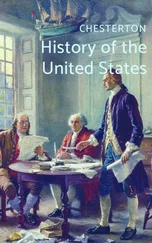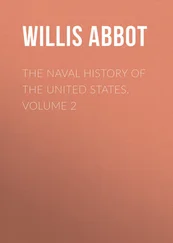United States Marine Corps
Tactics and Strategies for Engaging in Military Operations
Madison & Adams Press, 2021. No claim to original U.S. Government Works
Contact: info@madisonadamspress.com
EAN 4066338119292
This is a publication of Madison & Adams Press. Our production consists of thoroughly prepared educational & informative editions: Advice & How-To Books, Encyclopedias, Law Anthologies, Declassified Documents, Legal & Criminal Files, Historical Books, Scientific & Medical Publications, Technical Handbooks and Manuals. All our publications are meticulously edited and formatted to the highest digital standard. The main goal of Madison & Adams Press is to make all informative books and records accessible to everyone in a high quality digital and print form.
CHAPTER I INTRODUCTION CHAPTER I INTRODUCTION Table of Contents
SECTION I GENERAL CHARACTERISTICS SECTION I GENERAL CHARACTERISTICS Table of Contents
1-1. Small wars defined. 1-1. Small wars defined. Table of Contents a. The term “Small War” is often a vague name for any one of a great variety of military operations. As applied to the United States, small wars are operations undertaken under executive authority, wherein military force is combined with diplomatic pressure in the internal or external affairs of another state whose government is unstable, inadequate, or unsatisfactory for the preservation of life and of such interests as are determined by the foreign policy of our Nation. As herein used the term is understood in its most comprehensive sense, and all the successive steps taken in the development of a small war and the varying degrees of force applied under various situations are presented. b. The assistance rendered in the affairs of another state may vary from a peaceful act such as the assignment of an administrative assistant, which is certainly nonmilitary and not placed under the classification of small wars, to the establishment of a complete military government supported by an active combat force. Between these extremes may be found an infinite number of forms of friendly assistance or intervention which it is almost impossible to classify under a limited number of individual types of operations. c. Small wars vary in degrees from simple demonstrative operations to military intervention in the fullest sense, short of war. They are not limited in their size, in the extent of their theater of operations nor their cost in property, money, or lives. The essence of a small war is its purpose and the circumstances surrounding its inception and conduct, the character of either one or all of the opposing forces, and the nature of the operations themselves. d. The ordinary expedition of the Marine Corps which does not involve a major effort in regular warfare against a first-rate power may be termed a small war. It is this type of routine active foreign duty of the Marine Corps in which this manual is primarily interested. Small wars represent the normal and frequent operations of the Marine Corps. During about 85 of the last 100 years, the Marine Corps has been engaged in small wars in different parts of the world. The Marine Corps has landed troops 180 times in 37 countries from 1800 to 1934. Every year during the past 36 years since the Spanish-American War, the Marine Corps has been engaged in active operations in the field. In 1929 the Marine Corps had two-thirds of its personnel employed on expeditionary or other foreign or sea duty outside of the continental limits of the United States.
1-2. Classes of small wars. 1-2. Classes of small wars. Table of Contents a. Most of the small wars of the United States have resulted from the obligation of the Government under the spirit of the Monroe Doctrine and have been undertaken to suppress lawlessness or insurrection. Punitive expeditions may be resorted to in some instances, but campaigns of conquest are contrary to the policy of the Government of the United States. It is the duty of our statesmen to define a policy relative to international relationships and provide the military and naval establishments with the means to carry it into execution. With this basis, the military and naval authorities may act intelligently in the preparation of their war plans in close cooperation with the statesman. There is mutual dependence and responsibility which calls for the highest qualities of statesmanship and military leadership. The initiative devolves upon the statesmen. b. The legal and military features of each small war present distinctive characteristics which make the segregation of all of them into fixed classifications an extremely difficult problem. There are so many combinations of conditions that a simple classification of small wars is possible only when one is limited to specific features in his study, i. e., according to their legal aspects, their military or naval features, whether active combat was engaged in or not, and many other considerations.
1-3. Some legal aspects of small wars.
1-4. Functions of headquarters Marine Corps.
1-5. Phases of small wars.
1-6. Summary.
SECTION II STRATEGY
1-7. The basis of the strategy.
1-8. Nature of the operations.
1-9. National war.
SECTION III PSYCHOLOGY
1-10. Foreword.
1-11. Characteristics.
1-12. Fundamental considerations.
1-13. Revolutionary tendencies.
1-14. Basic instincts.
1-15. Attitude and bearing.
1-16. Conduct of our troops.
1-17. Summary.
SECTION IV RELATIONSHIP WITH THE STATE DEPARTMENT
1-18. Importance of cooperation.
1-19. Principles prescribed by Navy Regulations.
1-20. Contact with State Department representatives.
SECTION V THE CHAIN OF COMMAND—NAVY AND MARINE CORPS
1-21. Navy regulations.
1-22. Control of joint operations.
1-23. The directive.
1-24. Naval officer commanding ashore.
1-25. Marine officer commanding ashore.
1-26. Marine—Constabulary.
1-27. Direct control by Navy Department.
SECTION VI MILITARY—CIVIL RELATIONSHIP
1-28. Importance.
1-29. Contact with national government officials.
1-30. Cooperation with law-enforcement agencies.
1-31. Contact with inhabitants.
CHAPTER II ORGANIZATION
SECTION I THE ESTIMATE OF THE SITUATION
2-1. General.
2-2. The mission.
2-3. Factors to be considered in estimating enemy strength.
2-4. Relative strength.
2-5. Enemy courses of action.
2-6. Own courses of action.
2-7. The decision.
2-8. Supporting measures.
2-9. Campaign and operation plans.
SECTION II THE STAFF IN SMALL WARS
2-10. Command and staff responsibility in small wars.
2-11. The Force Commander.
2-12. Staff procedure.
2-13. The chief of staff.
2-14. The first section (personnel)—F-l.
2-15. The second section (intelligence) F-2.
2-16. The third section (plans and training)—F-3.
2-17. The fourth section (supply)—F-4.
2-18. The special staff.
2-19. The adjutant.
2-20. The inspector.
2-21. The law officer.
2-22. The officer in charge of civil affairs.
2-23. The chaplain.
2-24. The paymaster.
2-25. The provost marshal.
2-26. The commanding officer of special troops.
2-27. The artillery officer.
2-28. The air officer.
2-29. The communications officer.
2-30. The engineer officer.
2-31. The surgeon.
2-32. The quartermaster.
2-33. The chemical officer.
2-34. The tank officer.
2-35. The munitions officer.
2-36. The post exchange officer.
2-37. The amusement and welfare officer.
Читать дальше












